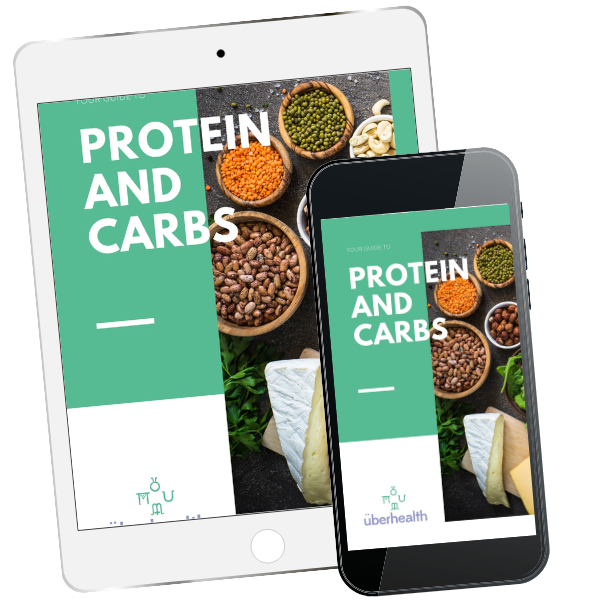Nutrition: The Fourth (and Fifth) Discipline in Triathlon

Triathlon is a sport that demands everything—time, energy, focus, and often, a fair bit of money. Over the last 14+ years, I’ve worked with triathletes both as a competitor and as a nutritionist. And despite all the dedication that goes into training and gear, nutrition is still the most overlooked element in performance and recovery.
If you want to race well and recover better, nutrition—and sleep—deserve the same focus as swim, bike, and run.
The Trouble with Too Much Information
We’re lucky to live in a time when there’s endless access to research, expert opinions, and practical tips. But that doesn’t always make things easier.
The internet is full of sports nutrition advice—some of it evidence-based, some of it anecdotal, and some that’s simply outdated. The trick is knowing how to interpret it, what works for your body, and what to leave behind.
The most common mistake? Athletes chasing performance gains without giving their gut time to adapt. A new fuelling strategy might sound great in theory—but if your digestive system can’t handle it, it’s not going to help.
Carbohydrate Guidelines: Old vs New
For years, the standard fuelling advice was 1 gram of carbohydrate per kilo of body weight per hour. This is still a decent starting point for most athletes, especially in a clinical setting where we’re observing digestive tolerance.
More recent research suggests aiming for up to 90 grams of carbohydrate per hour during endurance events—regardless of your size or sex. But here’s the catch: to go beyond 60 grams, you need to mix your carbohydrate sources.
Why? Because the gut can only absorb around 60 grams of glucose per hour. Anything more, and you’ll need to introduce additional carb types like fructose, maltodextrin, or sucrose. These use different intestinal transporters, allowing for greater overall absorption.
Not All Products Are Created Equal
Many modern sports drinks and gels now contain multiple carbohydrate sources for this very reason. But it’s not just about what you take in—it’s about how much fluid you take it in with.
Carbohydrate drinks are typically made at a 6–8% concentration (that’s 6–8 grams of carb per 100 mL of fluid). This ratio supports gastric emptying without causing discomfort. When you ingest gels or more concentrated products, you need to dilute them with extra water. Otherwise, you risk slowing digestion or causing gastrointestinal distress.
Once the carb concentration in the stomach exceeds 9%, absorption slows significantly.
Fuelling vs Fluid: Finding the Right Balance
Trying to hit 90 grams of carbohydrate per hour? You’ll need to increase your fluid intake too. But that’s not always easy. Most athletes struggle to drink more than a litre per hour, and overhydration can be just as dangerous as dehydration—leading to issues like hyponatraemia.
It’s a balancing act, and the right combination is different for everyone.
Gut Tolerance Matters
Some athletes seem to have iron stomachs—others, not so much. Symptoms like sloshing, cramping, nausea, diarrhoea, or vomiting are not uncommon on race day, and they can turn a great race into a hard slog very quickly.
Your gut becomes more sensitive under stress. Factors that reduce carbohydrate and fluid absorption include:
- Dehydration
- Increased intensity
- Heat and humidity
- Duration of the event
- Overconsumption of carbs without enough fluid
As Professor Asker Jeukendrup says, “Ingesting a carbohydrate solution that is very concentrated and/or has a high osmolality is likely to cause gastrointestinal discomfort.”
Practice Is Everything
Getting through a long-course triathlon without gut issues is no small feat. If you’ve done it—consider yourself lucky (or blessed by the triathlon gods).
The fuelling strategy that works for your favourite pro may not work for you. Elite athletes often have very different digestive capacities, sweat rates, and training histories.
Instead of copying what others are doing, focus on consistent trial and error in training. If you find a fuelling strategy that works—stick with it. No matter what a new product promises or what your training buddies swear by, consistency often beats novelty.
One Size Doesn’t Fit All
Whether 60 grams per hour works best for you or you thrive on 90, the key is personalisation. There are so many variables to consider:
- Body size and weight
- Digestive tolerance
- Sweat rate and fluid loss
- Gender differences
- Race-day intensity
- Environmental conditions
The reality? Sports nutrition isn’t about chasing the perfect formula. It’s about understanding your body, respecting your limits, and building a plan that works for you.
And if all else fails—remember, the more expensive your bike, the better your digestive system… right?
Further reading: Carbohydrate Supplementation During Exercise – Does It Help? How Much Is Too Much?
FREE RESOURCE


